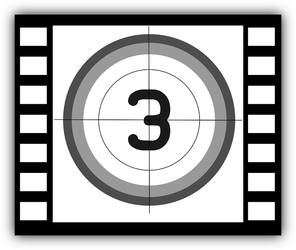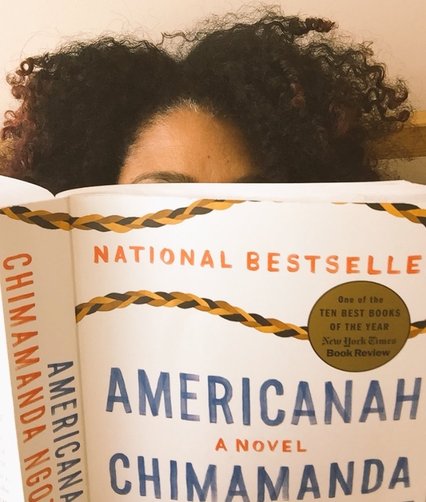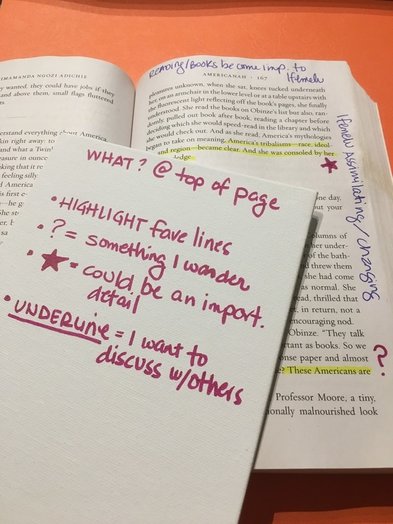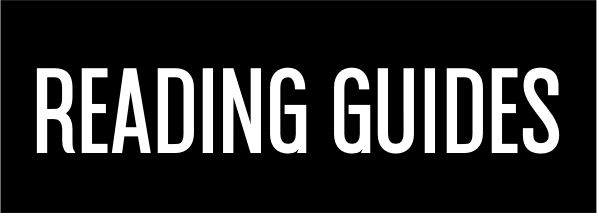|
One of the reasons we start or join a book club is to share the experience of reading. Characters we care about, and the conflicts and obstacles they face, keep us interested and moving forward in our reading: will Ifemelu reconnect with Obinze? Will either of them find peace in their new countries? What about Ifem ghosting on Obinze? What is he thinking, and is it possible for her to resolve this with him after so many years of silence? While this flow drives the story in fiction, we probably want a less dramatic scene for our book club discussion. We can probably all relate to conflict here and there in a book club setting – you didn’t like a book that someone else adores, one person dominates the conversation, another doesn’t contribute. Most can be managed by establishing a meeting structure. Others require more attention. Remember Freytag's Pyramid – identifying the rising and falling action enjoying the sense of resolution and finality as we close the book after the last line, maybe even saying, “The End,” in our heads? Picture a book club on a random Tuesday. Most people show up and everyone is Getting Along, pouring the coffee or wine, settling in and getting comfortable. Conversation is flowing. The book sparks some connections to childbirth. Several women share their stories and one woman begins to share her views on home birth. A friendly discussion follows between all members of the group until eventually it’s time to close. Goodbyes are said all around, and you head back home.
The next morning, you’re up early and see an email from one of the book club members. It came in at midnight, sent to the 7 in attendance at the book club and 2 who weren’t able to make it. She communicates how upsetting the conversation was for her and that she is extremely angry about some of the things said, specifically that they are in direct opposition to what she thinks and feels, and that these comments were disrespectful to her and her housemates (who overheard the discussion from another room). Conflict it is. She calls you out in particular, saying that you should have known how she felt and yet you didn’t stop the discussion. The opinions expressed seem to be the Inciting Incident, although at the time it wasn’t clear there was a problem. Since she did not express anything in the midst of the conversation, it seems there was an Internal Process in which she realized her feelings of anger. What to do next? Now that all of the book club members have been made aware of the situation, an External Process seems fair. Perhaps you Reply All with your response. Perhaps you contact her directly to discuss the issue. Whatever your choice, if you don’t already have a strategy for conflict resolution, reach out for a tool like Conflict Resolution Skills as you consider next steps. Each person in the book club will likely deal with the email in their own way. Ultimately, finding a way to resolve the issue will keep the club healthier than ignoring it. Resolution can begin with a simple invitation to continue the discussion for those who wish to listen and be heard. Set a time and location to meet. Practice your own ways of stress relief before the meeting – go on a run, meditate, take a yoga class, or journal to calm your mind. Keep it light, remembering that this is merely a conflict. Yes, feelings are hurt. Also, midnight emails are often seen differently in the light of day, especially by the author. Making space to talk and to listen can meet the need to respected and valued. Before scheduling the next book club asking, “Is there more you want to say?” can be helpful. Clearing the way will allow book club to Move On. Conflict resolved in a healthy manner is key to deepening trust and building strong relationships. Happy reading and resolving!
In this final #OneBookOneNY podcast, members of the CPET book club unpack the format of Americanah, gender roles, and other important text-to-life connections.
There are spoilers included in this episode - if you haven't finished reading yet, proceed at your own risk! Music courtesy of www.bensound.com/
In this episode, the CPET book club models how to have in-depth conversations on the topic of race. As you'll hear, the group tackles this challenging topic by framing the conversation around quotes from Americanah and personal experience, which allows for broader discussion.
It’s here! The Book Club Guide for Part 7 of Americanah.
As you plan your next book club gathering, consider a meetup at one of the One Book One New York community events. Weave together a community discussion or film with your own conversation! If you haven’t already done it, download the audiobook for free from Scribd. Ways to use the audio: 1) listen to it when you don’t have the opportunity to hold the book in your hands, 2) pick a section to play at your book club opening or closing, 3) if you’ve already read the book in print, layer on a second reading through listening. Shout out to all partners on the project! Our excitement continues to grow as we see incredible ways people around the city are engaging with the book and with one another. One Book One New York NYC Media & Entertainment & Presenting Sponsors:
Book clubs can be fun! Book clubs can be tricky. Book clubs can be stimulating, and sometimes they fall flat. Whatever comes at your next book club, employ one of these closings to articulate each person’s learning and to encourage communication between members. 3 - 2 - 1 Go around the room, starting with the person with the longest sleeves, and each person shares . . . 3 Things I Learned 2 Questions I still have 1 Idea I want to explore -or- 3 of my favorite characters 2 of my favorite settings 1 of my least favorite events -or- 3 Things I appreciate about our club 2 Ways I contribute to the group 1 Book I hope we’ll read in the future Make your own 3-2-1, customized to your club. Hots & kNots Easy peasy: everyone share a hot (positive moment) and kNot (low point or something that isn’t quite settled). Go around the room, starting with the person who has the darkest color shoes. One & One Even easier, even peasier! ONE thing I’m taking with me & ONE thing I’m leaving behind. For example, “I’m taking with me the point Marcelle made about the mother’s hair and religion; I’m leaving behind my misunderstanding about Blaine’s relationship with his sister.” Go around the room, starting with the person whose birthday is nearest to today.
Remember that closing doesn’t need to be only happy or easy sharing, but it should support closure for the meeting which provides an out for those that can’t hang all night or for the host that needs to go pick up their child from their after school program. It also allows members to share their learning and for the members to learn a little more about one another.
In this podcast, the CPET book club unpacks Chimamanda Ngozi Adichie's Americanah. Using targeted questioning and key passages from the first two parts of the novel, the book club explores the literal and symbolic value of hair, the difficulties of depression, and the complicated nature of race.
Music courtesy of www.bensound.com/
Whether you’re considering a classroom book club for the first time, or are already guiding your students through their third book this year, here’s a list of benefits and some tips for success you can employ right away!
NYC’s District 75 published their Middle School Units of Study, Developing Autonomy when Engaging with Literature, online. In it they list some of the benefits of book clubs in the classroom: Book clubs:
Thoughtfully planned book clubs position learning in the hands of the students and provide discussion tools students can use as they work out their responses to the book. We provide approaches to professional development that bridge theory and practice to generate solutions that work for a multitude of schools. With that bridge in mind, enjoy the following as you think through your classroom’s book club possibilities!
10 tips for success in your classroom book club
1. Generate excitement
Reveal the book club idea, like a fun surprise, building anticipation about the “way we’re going to experience our next book together,” use pictures or video, have students create their own collage of what a book club might look like (imagine no limitations!). Draw from their collages when introducing the book club concept. 2. Share decision-making While your book choice may be set, make as many other decisions as possible with your students: room setup, groupings (can they pair with one person and then you put the pairs together?), how the conversations flow (first we write, then we talk, then we create something in response...). You probably have all the pieces in mind. How much choice can you give the students on how those pieces are put together? 3. Communicate expectations What are your expectations? Will each student talk/write/facilitate a certain amount? Is there a rubric you design that students can use in their groups? What sort of assessments will there be along the way? What are the students' expectations? How will I know if I’ve done what I’m supposed to do in class on book club days? What if someone in the group isn’t doing their share? What if I didn’t read last night? How do I negotiate sticky relationships in the group? 4. Establish ground rules, together. Using your classroom guidelines/expectations, ask students to work up a set of ground rules for their groups. What does respect look like? What does disagreement look like? Do they want to use an object (whoever has the frog plushy) to indicate the speaker? What does listening look like? Some of these will need to be taught, so watch for the things that aren’t on the students’ radar yet -- you may want to prep a mini-lesson on a particular skill. Identify roles within the group. Whether they rotate the roles daily or weekly, each person knowing their role, and the expectation for this role (facilitator, scribe, reporter, etc) is a helpful handle for them to stay engaged. Every person should have a role. 5. Lead by example Whether you start with a fishbowl of a book club group or you sit in on each group as they begin, follow through on ground rules to help students feel secure that their agreement will be supported. Follow the protocols you and the students set in place. even when it’s hard because you want to make an important point about the book but don’t have the plushy frog yet! Listen, like the students, be patient, and get that frog so you can make your point -- just like the students do. Pull the teacher card only when necessary. 6. Gather tools Students can go into their book club groups with a toolbox (paper, highlighter, pen, templates for discussion) and you can help them add tools along the way. Look for Book Club guides that you can tweak for your students. Use our What? So What? Now What? reading tool as a regular way of guiding conversation. Dig back into your own toolbox and refresh some templates for the book club setting -- students will be familiar with the process and also experience a new way to use the tool. 7. Anticipate tough conversations Having already read the book (you’re almost finished, right?), you’ll be able to identify which sections may bring up sticky subjects for students to discuss. You can certainly bring the groups together for discussion on something especially sensitive. Also, you can provide a tool to help them make sense of their own thoughts and feelings before they begin their group discussions. Try the Courageous Conversations template to help students sort out what they believe, think, and feel about a certain section of the book, and then what they plan or imagine they will or would Do in response. 8. Keep it student-centered Ask yourself, as you look at your lesson plans for the next day/week/month, "Is this something a student can do/lead without sacrificing our educational goals?" If it is something a student can take on, why not have them lead it? Keep giving away what you can -- this opens up more time and energy for those things essential to your role as an educator and allows student to enlarge their investment in their own learning. For instance, do you need to do the opening reading aloud? Could a student hand out the tools for the day? Could groups collect their own responses and post them for you to review? 9. Celebrate completion Book clubs love to celebrate! Usually it’s every time they meet, with snacks and drinks and a general good vibe because they got to get out of the house or office or daily routine to talk about something they enjoy: reading. Give your students a bit of that experience. Plan a celebration at the end of the book. Use the theme of the book to guide how you might celebrate — can there be some food or drinks or decorations or fun activity you engage in to mark the end of the the book club experience? You know what we’re going to say next: plan it together! Get creative and have fun. 10. Share your ideas below You’ve got a lot of experience. You’ve got a lot of ideas. You’ve tried things out that have worked great and have tanked miserably! Share your wisdom and experience with other teachers by commenting below!
Looking for more strategies for your classroom?
A reading tool for you and your book club Use it when you’re reading on your own.
Take notes, make predictions, ask questions. Bring it to book club and use as a discussion starter... ...either filled out in advance by each member or take a few minutes at the start of your meeting for each person to fill out the template, noting what they want to discuss, investigate, or do in response. Share in pairs and/or in the larger group. DOWNLOAD THE READING TOOL Perhaps you already enjoy grabbing a highlighter when your sit down to read or underlining your favorite lines of a book. Annotating (adding marks, notes, diagrams, etc, to comment or explain a text) is a helpful way to engage with what you’re reading, whether a story, poem, letter, or article. If you haven’t tried it yet, here are a few good reasons to jump in and a couple of tools to get you started! Good Reasons
Tools Guide to annotation marks:
DIY Reading Kit: put 1 highlighter, 1 pen or pencil, sticky notes in a Ziploc bag, or rubber band them together. There you have it! A portable reading kit. Add heart or star stickers for extra fun & easy ways to mark favorite passages or important details. Note: Skip making marks in library books. You don’t want fines added to your reading experience! Try sticky notes for annotating in borrowed books; remove notes before you return books.
The answer is a simple, “No way!” Facilitation styles and goals are different, and can be flexible to meet the book club’s goals and work most effectively with the group’s personality and relationship dynamics. Considering two questions will help you work out the most effective way(s) you can facilitate discussion for your book club. First, who are you? Be Yourself: there is no “typical” book club facilitator. It takes all types of people to support all kinds of book clubs. You bringing your best self will make the best book club experience for everyone!
Know what is fixed and what is flexible for you. This will help you develop a realistic expectation of yourself as a facilitator and let go of any perfectionist ideas that will only stand in the way of you bringing your best self to the discussion. Second, who is your book club? Know Your Group: articulating the goals and considering the members of your group will give you some clues on how best to facilitate the conversation.
Ultimately, be in a book club that excites you! If you find yourself dreading facilitation most of the time, it might not be because you don’t want to facilitate, it might be because you’re not in the best fit for your style.
Coming Soon: Structuring Your Book Club: Low, Medium, High Previous Blog: Book Club: How do I find the perfect one? |
The Center for Professional Education of Teachers (CPET) at Teachers College, Columbia University is committed to making excellent and equitable education accessible worldwide. CPET unites theory and practice to promote transformational change. We design innovative projects, cultivate sustainable partnerships, and conduct research through direct and online services to youth and educators. Grounded in adult learning theories, our six core principles structure our customized approach and expand the capacities of educators around the world.
|
ABOUT US
525 West 120th Street, Box 182 New York, NY 10027 416 Zankel Ph: (212) 678-3161 [email protected] Our Team Career Opportunities |
RESOURCES
Professional Articles Ready-to-Use Resources Teaching Today Podcast Upcoming PD Opportunities |
COACHING SERVICES
Custom Coaching Global Learning Alliance Literacy Unbound New Teacher Network Student Press Initiative |
















